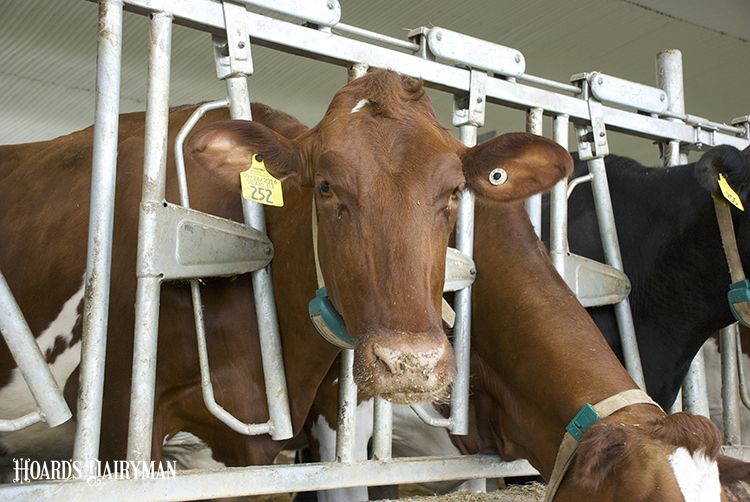
Hearing the term “fake news” may cause a visceral response in today’s political climate. With the abundance of media outlets available on so many different platforms, it’s become difficult to know what to believe.
What about fake news on your dairy?
My guess is your first response might be related to detractors that wish to push a false narrative about the way we manage cows and produce milk. That is not the fake news I want to dig into today. It is more the question of what you believe about your own dairy that may in fact not be true.
Asking the same question
In the routine analysis of our clients’ farms, I ask myself the same question over and over, “What do I believe to be true about some aspect of the dairy that is actually not true?” It is an investigation technique that is helpful in digging deeper into how cows are performing on a dairy. We work in a variable biological system with an unknown number of influences that truly impact the cow and the bottom line. A systematic process to discover these untruths may be the key to the next 5 pounds of milk.
The number of information sources that could be lying to us would rival the number of various media outlets on TV or social media. A modern dairy is full of information-gathering efforts from humans to instruments that measure everything from the weather to the butterfat levels in the milk. These will eventually tell us an untruth. We must approach this information with great care.
Potentially questionable information sources
Consider an example of a corn silage crop year change where the cows just aren’t getting the job done. Even if you sampled the new silage, maybe that sample taken soon after opening the pit isn’t representative of the entire pile. So, the first potential source of bad info is forage analysis information including a full lab report or even an on-farm moisture test. Verify and reverify, especially on a new crop silage.
Let’s take that a step further. Suppose the feeders are doing a great job checking silage moisture and delivering it on time each morning to the office. But, in the hustle and bustle of a busy dairy office, the changes weren’t being updated in the feeding software. Don’t say “never” on my place . . . it happens.
Two answers to the same question
Cow movements on a dairy are an integral part of the yearly life cycle of a cow. The days in milk (DIM) when these moves occur are planned for various reasons. I can remember a conversation with a client regarding the DIM when cows leave the fresh pen. This matters when I build the best ration for this pen.
“The fresh cows graduate from the fresh pen at 12 to 15 DIM,” said the producer. This tells me to really focus on diet goals related to the just-fresh cow.
After some discussion with the herdsman regarding intake and fresh cow transition issues and peak milk, I notice that the average DIM in that pen is actually 20 days. It turns out the transition cow team has been keeping fresh cows in that pen for as much as 10 days longer to keep an extra eye on them during a time of lower calvings. If this will be the plan going forward, there are a few things I will do differently in formulating that diet to help cows a bit higher in DIM and for higher intake levels.
Procedural drift is at the base of several of these potential situations. Things like pen moves, vaccinations, voluntary waiting period (VWP), and days at first breeding can all be set in protocols and believed to be happening as planned. By spending a little time in the herd management software, you might find that the actual implementation leaves something to be desired.
Verify, reverify, and verify a third time.
Train, retrain, and train again.
Feeding accuracy is always a topic where the truth may be hard to find. If a TMR sample does not meet the formulated nutrient specifications, we may then know that we aren’t feeding what we think we are.
Was it just a bad day the samples were taken or is the loading and mixing protocol at the dairy in need of some work?
We believe that the feeders put the correct amount of the correct ingredient in the mixer. Is this true?
Taking more frequent TMR samples might help for gaining confidence in the ration. Using an aggressive feed and ingredient inventory management and tracking process also will help ensure accurate ingredient loading and mixing. Don’t forget to verify mixer scales on a regular basis.
At times when the stars are aligned, 2 plus 2 can seem to equal 5 and the cows are exceeding expectations. In all the fun end enjoyment in that situation, don’t forget to look for the magic to keep it going. At other times, 2 plus 2 seems to barely equal 3. In these situations, ask yourself what you think may be happening at the dairy and verify to be sure it is so.
And one more thing, always believe the cows. Data and even humans can convey information that is not true. The computer may spit out false numbers and your intuition and memory can fail you. Building systems and a solid team of people with common goals will solve most of the problems. Calibrating equipment, completing preventive maintenance, and keeping everything clean and tidy just seems to help ensure success. It is attention to the details that will allow the cows to reach their maximum potential.







